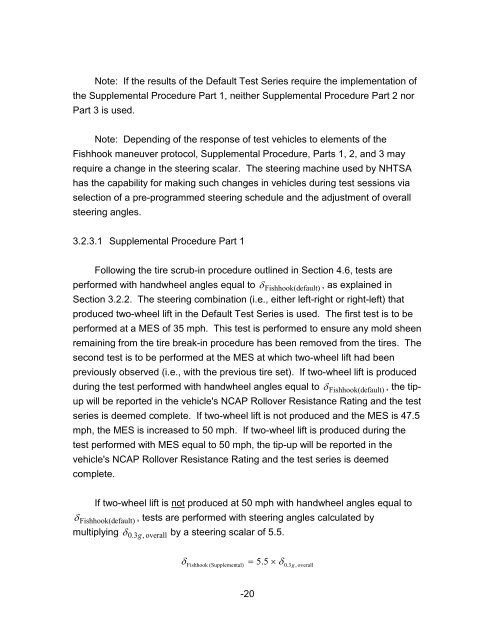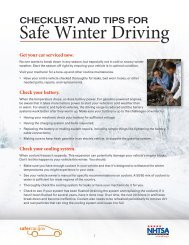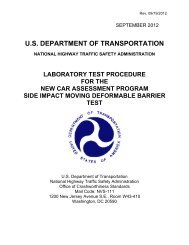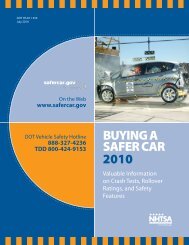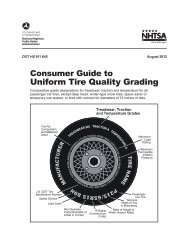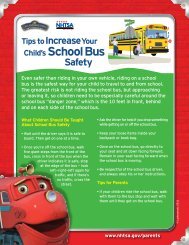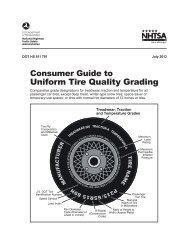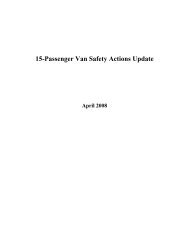Fishhook Maneuver Test Procedure - SaferCar.gov
Fishhook Maneuver Test Procedure - SaferCar.gov
Fishhook Maneuver Test Procedure - SaferCar.gov
Create successful ePaper yourself
Turn your PDF publications into a flip-book with our unique Google optimized e-Paper software.
Note: If the results of the Default <strong>Test</strong> Series require the implementation of<br />
the Supplemental <strong>Procedure</strong> Part 1, neither Supplemental <strong>Procedure</strong> Part 2 nor<br />
Part 3 is used.<br />
Note: Depending of the response of test vehicles to elements of the<br />
<strong>Fishhook</strong> maneuver protocol, Supplemental <strong>Procedure</strong>, Parts 1, 2, and 3 may<br />
require a change in the steering scalar. The steering machine used by NHTSA<br />
has the capability for making such changes in vehicles during test sessions via<br />
selection of a pre-programmed steering schedule and the adjustment of overall<br />
steering angles.<br />
3.2.3.1 Supplemental <strong>Procedure</strong> Part 1<br />
Following the tire scrub-in procedure outlined in Section 4.6, tests are<br />
performed with handwheel angles equal to δ <strong>Fishhook</strong>(default)<br />
, as explained in<br />
Section 3.2.2. The steering combination (i.e., either left-right or right-left) that<br />
produced two-wheel lift in the Default <strong>Test</strong> Series is used. The first test is to be<br />
performed at a MES of 35 mph. This test is performed to ensure any mold sheen<br />
remaining from the tire break-in procedure has been removed from the tires. The<br />
second test is to be performed at the MES at which two-wheel lift had been<br />
previously observed (i.e., with the previous tire set). If two-wheel lift is produced<br />
during the test performed with handwheel angles equal to δ <strong>Fishhook</strong>(default)<br />
, the tipup<br />
will be reported in the vehicle's NCAP Rollover Resistance Rating and the test<br />
series is deemed complete. If two-wheel lift is not produced and the MES is 47.5<br />
mph, the MES is increased to 50 mph. If two-wheel lift is produced during the<br />
test performed with MES equal to 50 mph, the tip-up will be reported in the<br />
vehicle's NCAP Rollover Resistance Rating and the test series is deemed<br />
complete.<br />
If two-wheel lift is not produced at 50 mph with handwheel angles equal to<br />
δ <strong>Fishhook</strong>(default) , tests are performed with steering angles calculated by<br />
multiplying δ by a steering scalar of 5.5.<br />
0.<br />
3g,<br />
overall<br />
δ × δ<br />
<strong>Fishhook</strong> (Supplemental)<br />
= 5.<br />
5<br />
0.3g,<br />
overall<br />
-20


